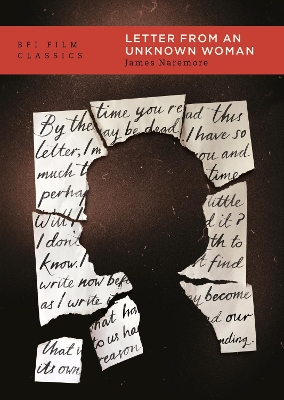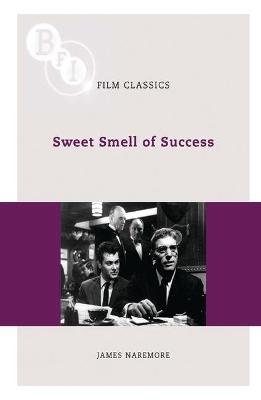BFI Film Classics
2 total works
James Naremore's study of Max Ophuls' classic 1948 melodrama, Letter from an Unknown Woman, not only pays tribute to Ophuls but also discusses the backgrounds and typical styles of the film’s many contributors--among them Viennese author Stephan Zweig, whose 1922 novella was the source of the picture; producer John Houseman, an ally of Ophuls who nevertheless made questionable changes to what Ophuls had shot; screenwriter Howard Koch; music composer Daniéle Amfitheatrof; designers Alexander Golitzen and Travis Banton; and leading actors Joan Fontaine and Louis Jourdan, whose performances were central to the film’s emotional effect.
Naremore also traces the film's reception history, from its middling box office success and mixed early reviews, exploring why it has been a work of exceptional interest to subsequent generations of both aesthetic critics and feminist theorists.
Lastly, Naremore provides an in-depth critical appreciation of the film, offering nuanced appreciation of specific details of mise-en-scene, camera movement, design, sound, and performances, integrating this close analyses into an overarching analysis of Letter’s “recognition plot;” a trope in which the recognition of a character’s identity creates dramatic intensity or crisis. Naremore argues that Letter's use of recognition is one of the most powerful in Hollywood cinema, and contrasts it with what we find in Zweig's novella.
The highest artistic achievement of Hecht-Hill-Lancaster, an innovative production company that emerged in Hollywood at the end of the classic studio system, Sweet Smell of Success (1957) portended the collapse of Breen-Office censorship and was the first US entertainment film to depict McCarthy-style exploitation of the press. It also presented an unusually dark view of the culture of celebrity, presaging developments of an even darker kind in our own day. Sweet Smell's frightening portrayal of a newspaperman loosely based on Walter Winchell and its unstinting depiction of corruption and sleaze in the world of Broadway theatres and nightclubs have given it a legendary reputation; critics and film-makers continue to praise the whiplash dialogue of Clifford Odets and Ernest Lehman, the seductive location photography of James Wong Howe, the stylish direction of Alexander Mackendrick and the disturbing performances of Burt Lancaster and Tony Curtis as ruthless gossip columnist J. J. Hunsecker and his ambitious but doomed acolyte, Sidney Falco.
James Naremore's masterly study of Sweet Smell of Success offers new information about the many revisions of the screenplay, the production company's negotiations with censors and the tense circumstances under which the film was shot and received by the public. Naremore places the film in its historical context, arguing that it functioned as the revenge of the Hollywood left against a repressive political and media environment that was beginning to change and momentarily lose its power. He also provides a detailed commentary on the finished product, analysing the important contributions of its several talented creators.

